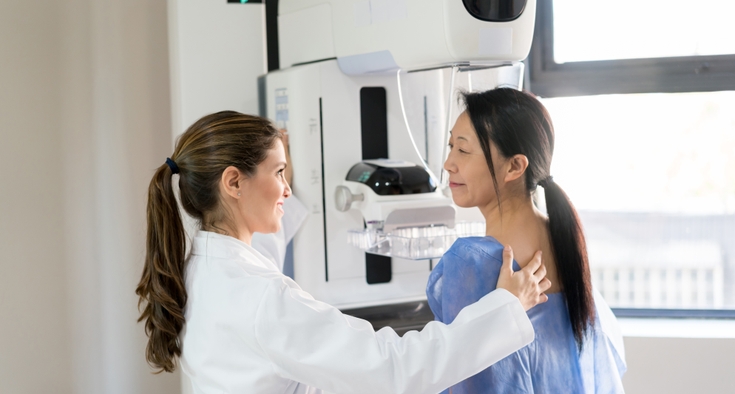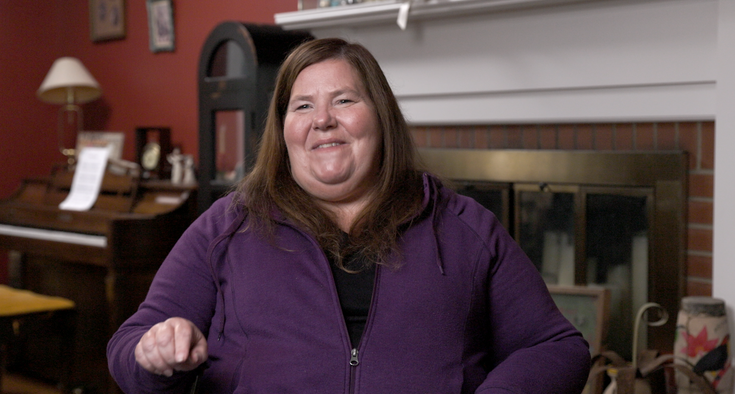There’s a new mammography option for women who might need specialized screening in the Lowcountry.
It’s at the Charleston Breast Center, a division of Novant Health East Cooper Medical Center. Registered mammography technologist Myra Collins shares more about contrast mammography, an option used primarily for one of two reasons:
- If your doctor wants additional diagnostic imaging after your mammogram. That might occur because the images weren’t clear or showed something that could be suspicious.
- Or, if you need to have annual mammograms plus breast MRIs because you are at high risk for breast cancer due to a genetic susceptibility.
For more information, call Charleston Breast Center, a division of East Cooper Medical Center. 843-416-6171
What is contrast mammography?
Collins explained: It’s like a regular mammogram, with one difference: before you get your mammogram, we will put an IV line into your arm and inject some iodine-based contrast dye into your blood stream through the IV.
"Then, we’ll take pictures, much the same way as we do during a normal mammogram. If your breast is healthy, it just looks like a plain, normal image. If not, the dye lights up any abnormalities or lesions and your doctor can get a good look at it," Collins said.
The contrast helps the image shows additional detail compared to a normal screening mammogram.
What is the benefit of doing contrast mammography instead of a breast MRI?
Contrast mammography is “newer” than MRI. So far, some research shows that the “sensitivity rate” – the ability of either method to detect disease if it it’s present – is roughly the same for contrast mammography and contrast-enhanced breast MRI.
The difference is the process.
There are some patients who can’t have an MRI because they have metal implants in their body.
And there are other patients who really don’t enjoy MRIs. If you get a breast MRI, you have to lie completely still on your belly inside the MRI tube. Being in the MRI tube can be stressful for some patients, especially if they’re claustrophobic. Some patients have to take anti-anxiety medication to get through the process. For some patients, it’s more soothing to have another mammogram.
Another benefit is that contrast mammography is covered by insurance companies when it's used for diagnostic purposes for screening women at high risk for breast cancer. MRIs are not always covered by insurance.
One surgeon said he once had a patient whose insurance company denied her getting an MRI even though she had dense breast tissue. They decided to move forward with a contrast enhanced mammogram for a closer look, and it revealed breast cancer that wouldn't have been detected had they only conducted a typical screening mammogram.
And patients tend to be willing to undergo more testing when it's a simpler procedure. A lot of patients do not like the breast MRIs because of cost and because of time. It's about 45 minutes to an hour in the machine, which can feel daunting.
After the contrast mammography, an imaging specialist reviews the scans and patients get results the same day, usually before they even leave the clinic.
That means patients aren't anxiously waiting for days for results. The team can put them at ease if there's nothing to worry about, or move on to further testing, if necessary.
Is contrast mammography something you are using with every patient, or just certain patients?
Right now, the American College of Radiology still recommends screening mammograms for every patient. And Novant Health recommends that women begin yearly screening mammograms at age 40, Collins said. That’s the mammogram you’re used to having (without contrast dye) that lets your doctor makes a comparison from year to year.
"We are using contrast mammography as an option for diagnostic mammograms, which happen when your doctor has identified suspicious areas on your screening mammogram, when you have very dense breasts and we need multiple types of imaging to see clearly, or when you’re having symptoms of breast cancer and your doctor wants to look very carefully at a specific area of your breast," Collins said.
Getting referred for contrast mammography doesn’t mean you have cancer. It can provide certainty that “nothing is going on,” or — if something is going on — it can provide a clear picture that helps your doctors figure out how to help you next.











